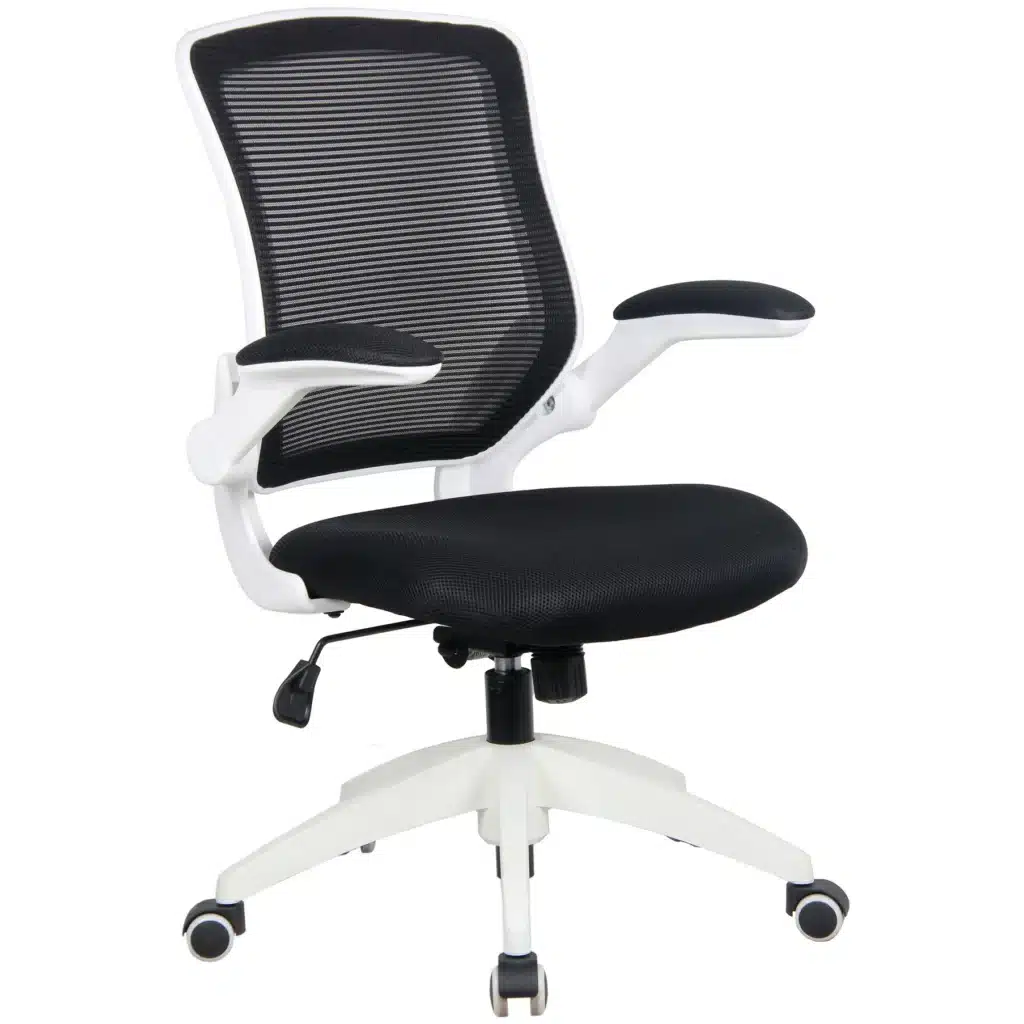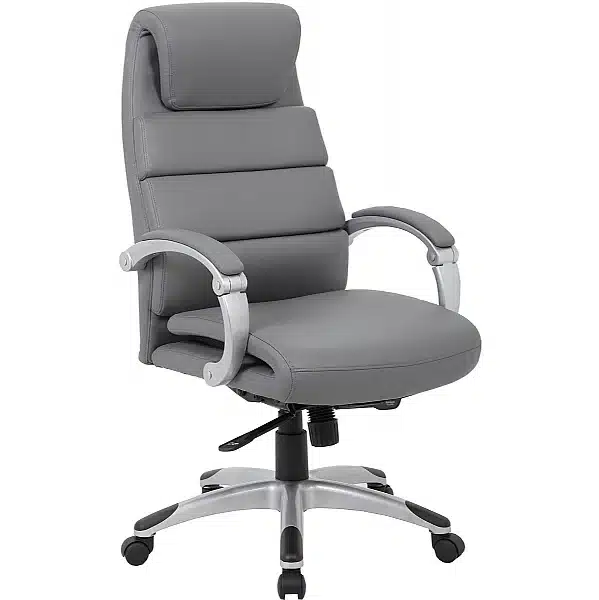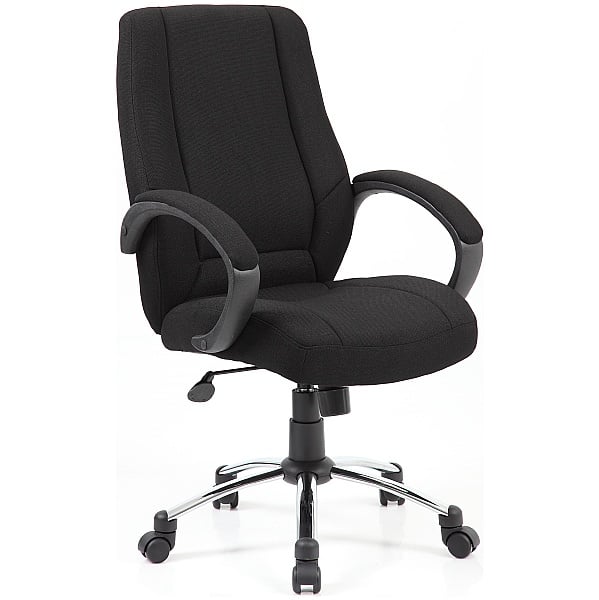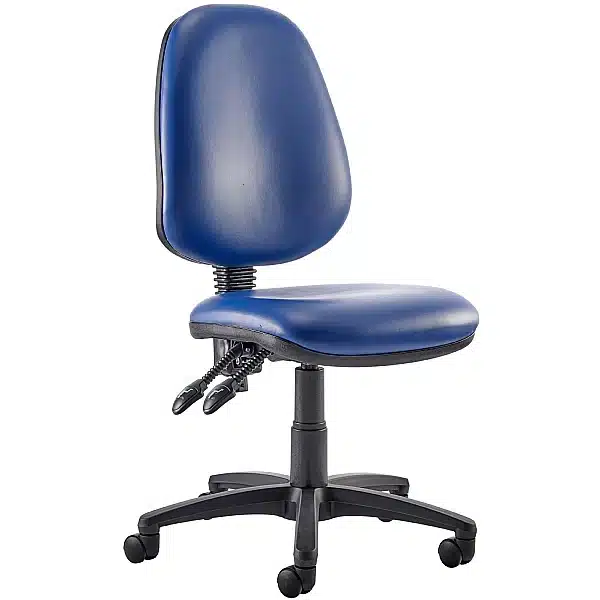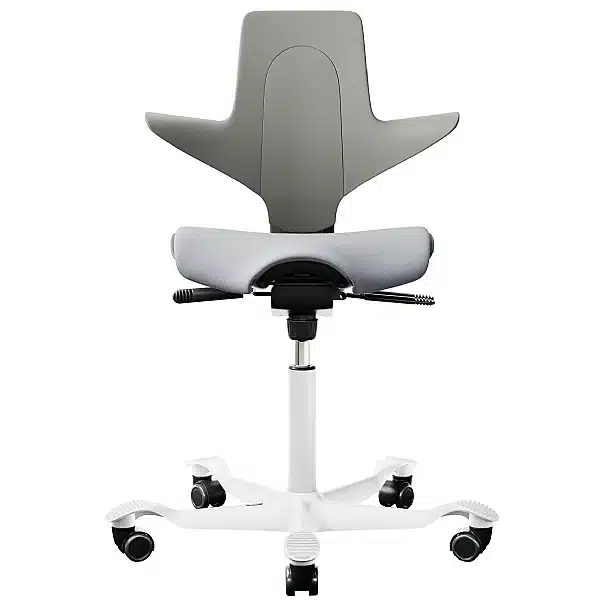Office Chair Materials 101: Which Is Best For You?
Learn the differences between the types of Office Chair Materials. Use our materials guide to understand the pros and cons of each, so you can confidently choose what best fits your needs. Gain a clearer understanding of what to prioritise – whether it’s comfort, durability, ease of maintenance, or budget!
Chair Materials
MESH
Popular for their breathability, mesh office chairs are often the most suitable chair material for warmer environments and long hours of sitting. The open-weave design helps promote airflow, keeping the user cool.
They are low-maintenance and provide great support. Mesh chairs come in various configurations, including mesh backrests, headrests, and even fully mesh seats.
LEATHER
Prized for its classic, premium look and durable feel, leather will forever be a popular office chair material.
Available in two types: genuine leather, which is more expensive but offers superior durability and comfort, and PU leather, a budget-friendly alternative that looks great and is easier to maintain but may wear out sooner.
FABRIC
Another popular type of office chair material is fabric, which is well-known for its soft feel and wide variety of colours and patterns. They provide great cushioning and comfort while remaining highly affordable.
However, fabric can be more challenging to keep clean compared to harder materials like leather or vinyl, as it tends to absorb spills and stains more easily and may require more frequent maintenance.
VINYL
Vinyl is another popular office chair material valued for its smooth, leather-like appearance and affordability. Incredibly suited for hygiene-focused spaces thanks to its resistance to spills and stains, making it easy maintenance.
Vinyl can feel less breathable than other office chair materials, which may lead to discomfort or a sticky feeling during extended use – particularly on warmer days.
PLASTIC
While rare, fully plastic office chairs do exist – often made from recycled materials – which can sometimes make them surprisingly expensive. However, most users will encounter plastic as a supporting material in more common chair designs.
Less common as the primary material for office chairs but important nonetheless, plastic is widely used in chair frames, armrests, and backrests. It’s lightweight, durable, and easy to clean, making it a practical choice for budget-friendly office furniture. While plastic doesn’t provide much cushioning or comfort by itself, it offers essential support and structure.
Office Chair Materials List
Up for interpretation, as it will vary between users and use cases. But this table provides a general guide for what to consider when shopping for new office chairs.
| Material | Comfort | Breathable | Ease of Cleaning | Durability | Average Cost |
|---|---|---|---|---|---|
| Mesh | High | High | Medium | Medium | Medium |
| Genuine Leather | High | Low | High | Very High | Very High |
| PU Leather | Medium | Low-Medium | High | Medium | Medium |
| Fabric | Medium-High | Medium | Low-Medium | Medium | Low-Medium |
| Vinyl | Medium | Low | Very-High | High | Low-Medium |
| Plastic | Low | Low | High | Medium | Expensive |
Mobile user turn horizontal…
Personal Use vs Business Use
Depending on whether you’re selecting an office chair for personal use or outfitting an entire office, your priorities might differ. For personal use, comfort and style might top your list, so investing in premium materials like genuine leather or high-quality mesh could make sense.
For business use, durability, ease of maintenance, and cost-efficiency often take precedence, making materials like PU leather, vinyl, or plastic more practical choices.
If you’re still unsure, give our friendly customer service team a call, who are ready to answer your questions and guide you toward the best office chair material for your needs.
